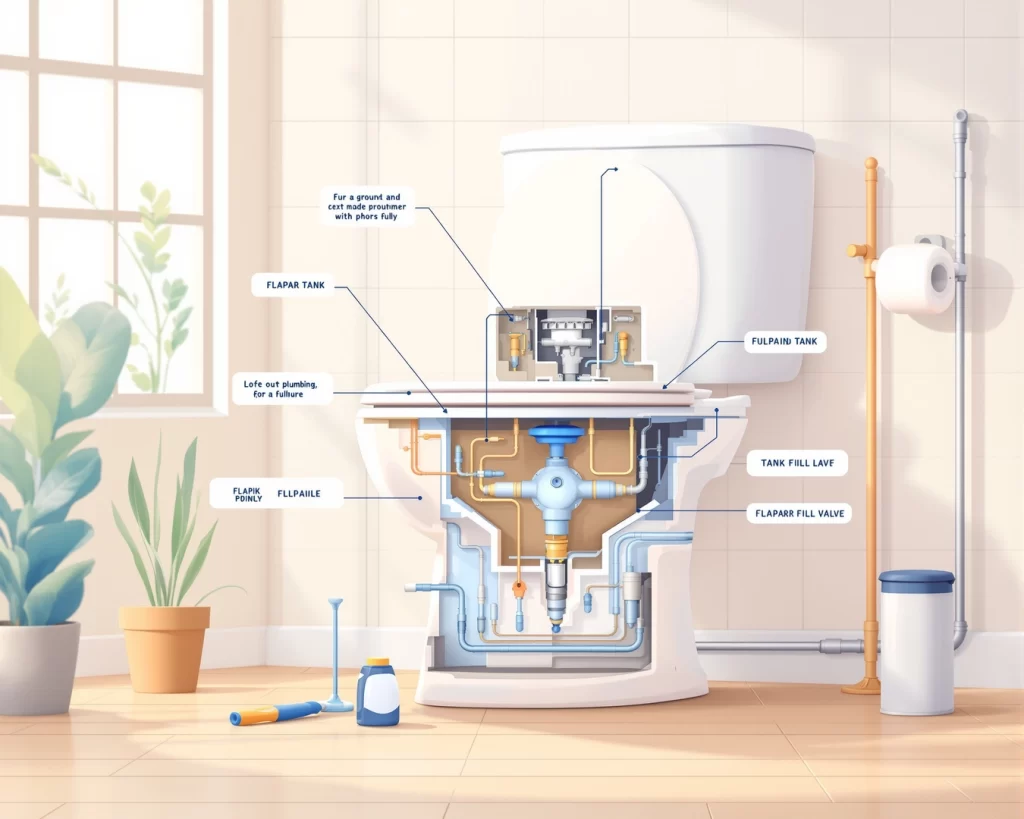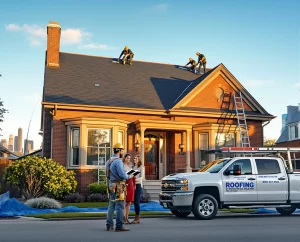When your toilet fills up with water after a flush, it’s usually a blockage in the trap or drain, a clogged vent stack, or a tank part misbehaving. Quick fixes include plunging, using a toilet auger, and checking the flapper and fill valve. If water rises repeatedly or drains slowly, you may have a sewer or septic problem.
What you’ll learn from this blog
- The most common reasons toilet water rises when you flush
- Quick, safe fixes you can try before calling a pro
- How to tell if it’s a vent, tank, or sewer line issue
- Prevention tips to avoid future panic-flush moments
- When to call Any Service Near Me for professional help
Start with the obvious: a clog hiding in the trap
Summary: Most rising-water moments come from a partial clog in the toilet’s S-shaped trap or nearby drain line.
Details: Imagine a narrow hallway jammed with a shoe—water still tries to pass, but it bottlenecks. That’s your trap. Tissues, wipes (even “flushable” ones), too much paper, or kids’ toys can choke the path. If the bowl fills and drains slowly or gurgles, you’re likely dealing with a trap or line obstruction.
Quick step-by-step to clear it
- Stop the overflow: Remove the tank lid and push the flapper down to stop water flow if it’s still running.
- Plunge properly: Use a flange plunger. Submerge the cup, then push and pull firmly 10–15 times without breaking the seal.
- Try an auger: Feed a toilet auger into the bowl and crank gently to snag or break the blockage.
- Test the flush: If water still rises, repeat once. Persistent rise = deeper clog.
Real-world note: We once found a travel-size shampoo bottle causing weeks of “mystery” slow-rises. The auger fished it out in seconds.
The sneaky roof vent: when airflow goes missing
Summary: A blocked vent stack prevents air from entering the drain system, which messes with siphoning and makes water rise or gurgle.
Details: Think of sipping from a juice box without opening the little straw hole—hard, right? Drains need air, too. Leaves, bird nests, or snow can block the vent on the roof. Signs include gurgling in nearby drains, slow flushing across multiple fixtures, and that occasional sewer smell.
What you can check safely
- Do you hear glugs or gurgles from the sink or tub when you flush?
- Do multiple drains seem slow, not just the toilet?
If yes, a vent issue is likely. Clearing a roof vent is best left to pros for safety reasons, but note the symptoms—they help us solve it fast.
Tank parts that quietly cause chaos
Summary: If your toilet fills up after flushing and then seems “off,” the tank could be misbehaving.
Details: The flapper, chain, and fill valve control how much water goes in and out. If the flapper doesn’t open fully, the flush is weak and can leave debris behind, causing recurring partial clogs. If the fill valve overfills, the bowl can rise more than it should and then settle slowly.
Simple checks in the tank
- Flapper: Is it warped, sticky, or not lifting fully? Replace if worn.
- Chain: Is it too short or too long? Adjust so the flapper opens fully.
- Water level: Should be about an inch below the overflow tube’s top. Adjust the fill valve as needed.
When it’s not the toilet at all: sewer or septic trouble
Summary: A rising bowl can signal a bigger issue—like a main sewer line blockage or a backed-up septic system.
Details: If every flush is drama and other drains are slow, suspect the main line. Tree roots, grease buildup, and collapsed pipes are common culprits. For septic systems, a full tank or clogged baffle behaves like a stubborn traffic jam: everything backs up at once.
Red flags you shouldn’t ignore
- Water rises in the toilet and the tub drains slowly
- Gurgling in multiple fixtures
- Sewage smell outdoors or near floor drains
If you’re seeing any of these, it’s time to call a professional for a camera inspection or hydro-jetting.
Keep the calm: easy prevention habits
Summary: A few small habits can save you from the next “why is it rising?!” moment.
Details: Think long game. Your toilet isn’t a trash can, and your drains behave better with a little TLC.
Quick prevention checklist
- Flush only toilet paper—no wipes, cotton balls, pads, floss, or paper towels
- Do two flushes for heavy loads
- Use an enzyme drain treatment monthly if you have frequent clogs
- Trim nearby tree roots if you’ve had main line issues
- Replace old flappers and fill valves every few years
Conclusion and a friendly nudge
Toilet filling up when you flush? Start with a solid plunge, check the tank parts, and watch for vent and multi-drain symptoms. If the water keeps rising—or you’d rather skip the mess—Any Service Near Me is here to help fast. Contact Us for same-day troubleshooting and fixes that stick. We’ll bring calm back to your bathroom.
FAQ
What plumbing problems are considered emergencies, and what can I do immediately?
An active leak, a burst pipe, a leaky water heater, or an overflowing toilet are all emergencies. Turn off the water supply at the main faucet and avoid using electricity near water until help arrives. For 24/7 service and a quick arrival, Any Service Near Me can dispatch an emergency technician.
How long will it take for a plumbing problem to reach my home in the United States?
The typical same-day response time for serviced areas is usually within a short window, and in emergencies, as soon as possible depending on traffic and availability. To coordinate the fastest possible arrival, Any Service Near Me prioritizes urgent calls.
How much does in-home plumbing service cost, and what factors influence the price?
The cost depends on the type of breakdown (leak, clogged drain, heater, etc.), the complexity, the parts needed, access to the area, and the urgency. You will receive a clear quote with no surprises before authorizing the work, and Any Service Near Me offers competitive and transparent pricing.
Can you resolve multiple tasks in a single visit, such as a leak, clogged drain, and heater inspection?
Yes, for efficiency, we typically combine diagnostics and repairs into a single visit when feasible, carrying common tools and spare parts in the vehicle. Coordinate your priorities when scheduling so Any Service Near Me optimizes your on-site time.
Do you offer a warranty and do you work with licensed and insured technicians?
You will receive a warranty on labor and parts depending on the type of service, with details written in the quote. The work is performed in compliance with local codes by qualified technicians, and Any Service Near Me stands behind its quality and regulatory compliance.
How do I schedule a visit or request a no-obligation quote?
Share your location, a brief description of the problem, and, if possible, photos or video. You’ll receive scheduling options, reminders, and confirmation before the technician arrives. Any Service Near Me makes it easy to schedule quickly online or by phone.





